|
Our final
site of the Highway 260 Sink Hole Trail is now finished. The
site is highly NON fossiliferous, so we collected four one gallon
zip lock bags of material to increase our chances to find anything
at all. It paid off, and approximately 2 cups of fines were obtained
after months of acid baths. 99% was ground up shell bits. Occasional
fossils were found after a huge amount of hand picking through
what must have been millions of ground shell bits. A few more
surprises. First, the first ever crinoid basal cup was found.
Some nice orthocone nautiloids, and one or two nearly intact
trilobite pygidiums.
What was found:
As far as what
was found in FOUR one gallon zip lock bag of rock, this list
highlights the best preserved specimens:
1. Adult Scaphopods
2. Juvenile Scaphopod Teleoconchs
3. Chonetids (Spirorbis)
4. Fenestrate Bryozoans
5. Branching Bryozoans
6. Orthocone Nautiloids
7. Crinoid parts
8. Rugose horn coral
9. Trilobite parts
10. Gastropods
11. Straparollus Gastropods
12. Possible Brachs
13. Quartz crystals
14. Ostracods
15. Productid Spines
16. Urchin Parts
17. Bellerophon
18. Bivalves/Clams
And here is what was NOT found that had been at other sites along the trail:
1. Sponges
2. Metallic Particles
3. Productid valves
4. Sponge Roots
5. Pectens
6. Stromotoporoids
The
Fossil Photos.
A few words on
how these photos were taken. Using an Amscope stereo microscope,
one or two dozen shots of each subject were taken with the focus
shifted a bit between shots. The focus stacking software Picolay
was used to combine the images to obtain one frame of fully sharp
focus. Thousands of frames are treated in this manner and the
final images of the Fort Apache micro fossils you see here are
the results of a huge amount of work! Enjoy.
Trilobites:
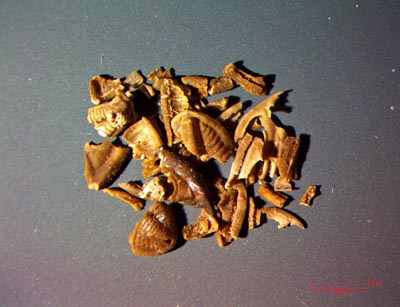 |
Phillipsia
sp. For such
a poor site, there were quite a few trilobite pieces. Most pieces
seen here are the folded over rim that surrounds the cephalon
and pygidium. A few free cheeks were found, and two nice pygidiums. |
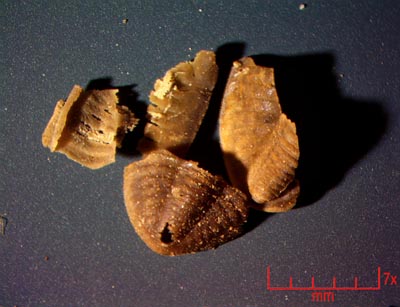 |
Phillipsia
sp. Pygidium
parts. The two pygidiums appear to be different species. |
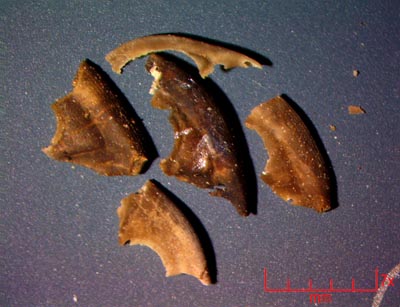 |
Phillipsia
sp. Trilobite
free cheeks, showing the eye cutouts. |
Bryozoans:
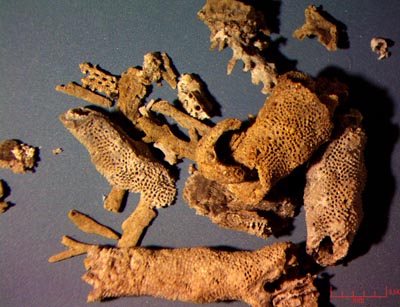
|
Two
sizes were found, one very small and branching, and the second
a more robust larger type that encrusts spines of urchins. Finally,
a few fenestrate bryozoans (net like). |
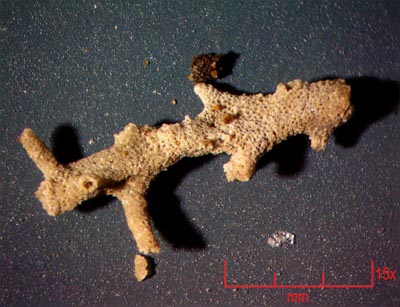
|
Close
up of one of the nicer branching bryozoans. |
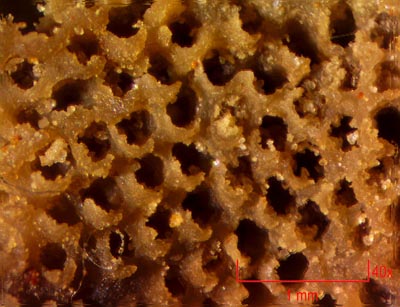
|
Close
up of the robust encrusting bryozoans showing clear cup structure. |
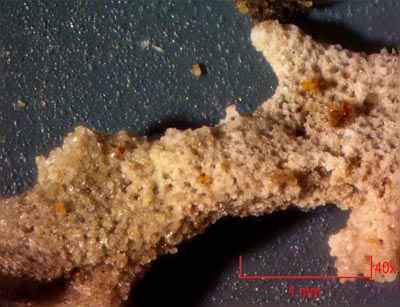
|
Same
magnification as above on the smaller branching types to compare. |
Chonetids
(Serpulid Worms):
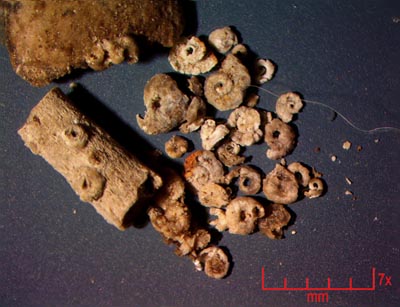 |
You
find these "Spirorbis" tube worms either singly or
encrusting urchin spines or clam shells. The loose ones were
attached originally to sea weeds, and fall off when the plant
dies. |
Bivalves:
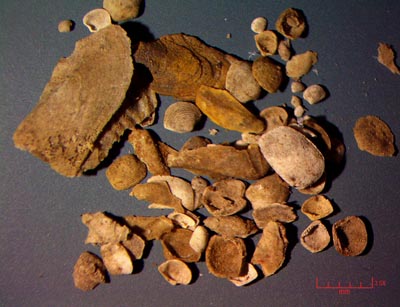 |
A
few bivalves were found, mostly the common types observed at
the other sections. |
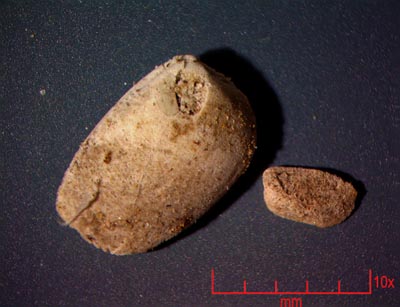 |
Boxy
shaped bivalve, both halves still intact indicates it died while
buried. |
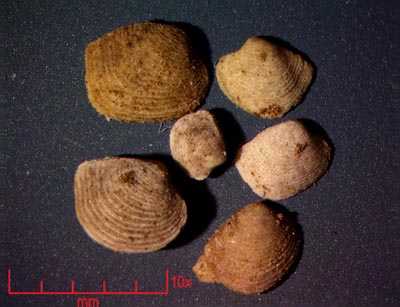 |
The
most common clam, a few still both valves intact. |
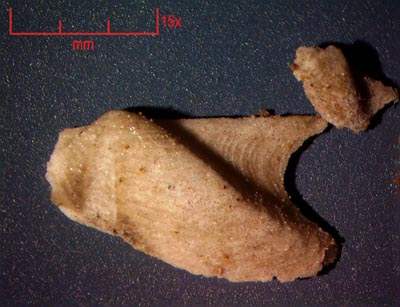 |
This
magnificent winged clam was one of the best ever found at any
site. What a surprise! The shells are extremely thin and they
usually get ground up. |
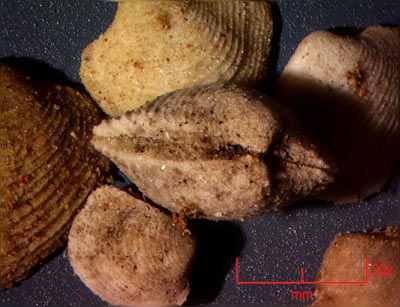 |
Edge
on view of a bivalve that died while buried. This is a close
up of the umbo region. |
Quartz
Crystals:
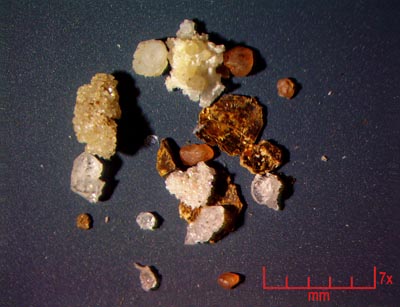 |
Dozens
of quartz, mica crystals were found. But no metallic pieces. |
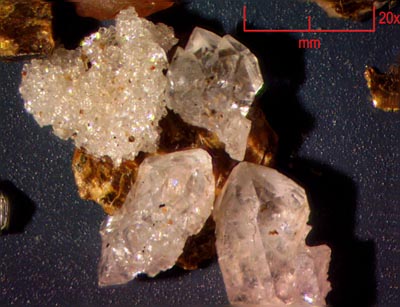 |
Close
up of some of the nicer quartz crystals. They are sand sized. |
Gastropods:
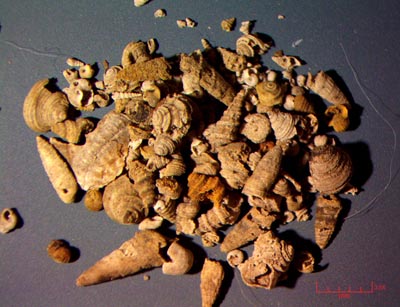 |
About
a quarter teaspoon of gastropods of various types. Mostly robust
types, few turriculate delicate specimens. |
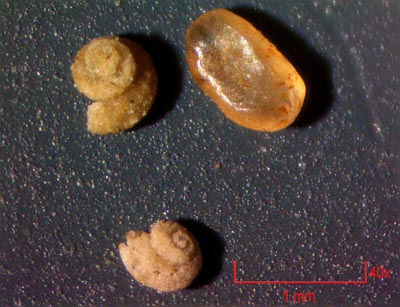 |
This
is a close up of two tiny gastropods, and a grain of sand for
scale comparison. |
Ostracods:
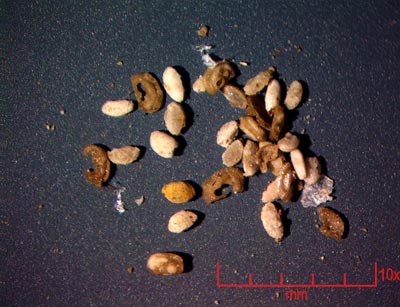 |
Genus
and species indet. Only
a small amount of ostracodes were found, and the more delicate
ear shaped types were usually much damaged. |
Scaphapods:
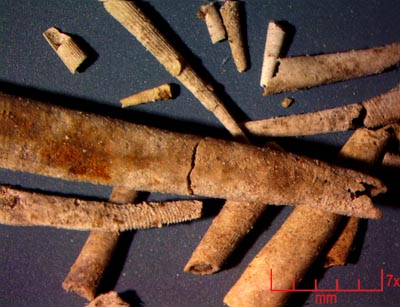 |
Plagioglypta
canna Sizes
ranged from only a few mm to over an inch. Both smooth and ribbed
types found. The one on the lower left shows the transition from
ribbed teleoconch to smooth shell as it matures. |
Productid
Spines:
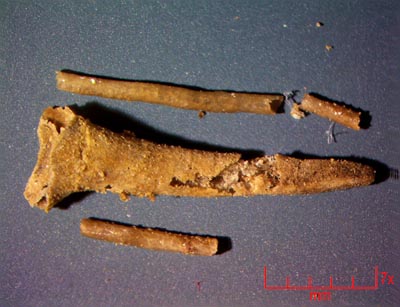 |
Bellaclathrus
spinosus Very
few spines found, the one in the center is probably an Aviculopecten
spine. |
Crinoids:
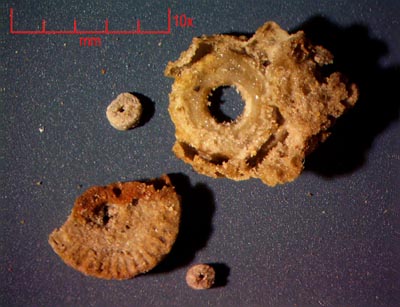 |
Crinoids
are rare in the Fort Apache. I found two small ossicles - perhaps
from the arms, one partial stem ossicle and the first ever partial
basal cup. |
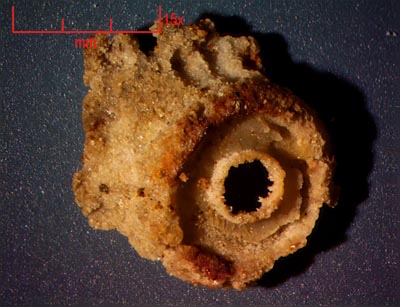 |
Bottom
of the crinoid basal cup. Preservation not good enough for identification. |
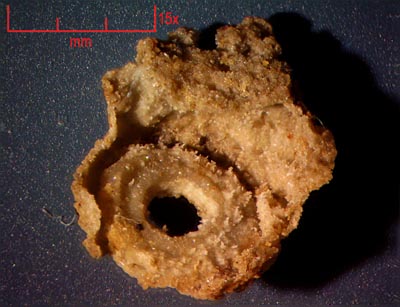 |
Inside
view of the basal cup. |
Straparollus
Gastropods:
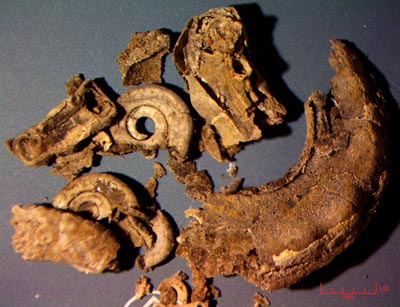 |
Straparollus
kaibabensis Assorted
specimens including a few arcs from larger ones. |
Urchin:
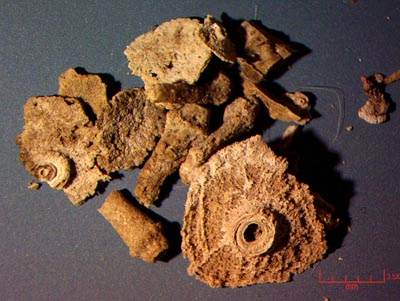 |
Echinocrinus
trudifer Very
few urchin parts were found. A few spines, plates and mouth parts. |
Nautiloids:
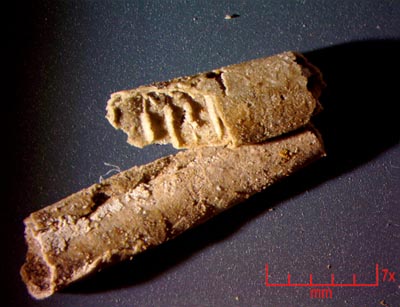 |
A
big surprise was to Orthocone nautiloids. The top one is open
such that you can see the septa. |
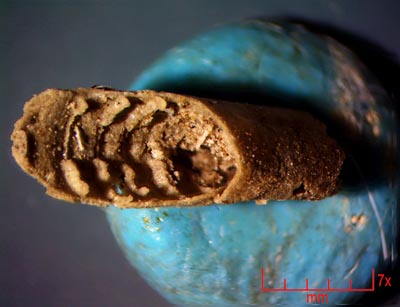 |
Close
up of the Septa inside one of the orthocones. |
Rugose
Corals:
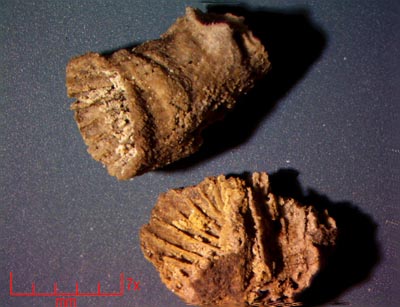 |
Two
small corals were found, the upper one is mostly complete. |
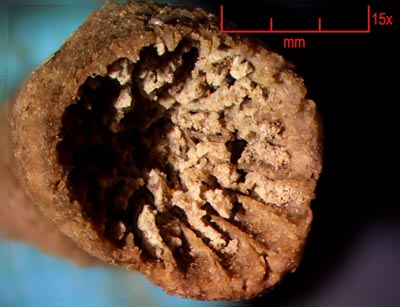 |
Close
up of the partitions inside the coralite. |
|

